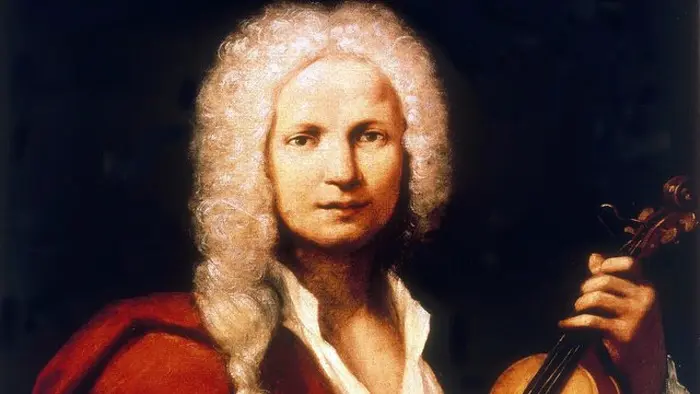The Baroque period, spanning from approximately 1600 to 1750, was a time of great innovation in music. This era produced some of the most enduring and influential works in Western classical music. Composers like Johann Sebastian Bach, George Frideric Handel, and Antonio Vivaldi pushed the boundaries of musical expression and complexity. The Baroque period is characterized by its elaborate ornamentation, contrasting dynamics, and emotional depth. This article highlights classic pieces from this era, providing insight into their significance and impact. Each piece reflects the artistic spirit of its time, making them essential for any music lover’s repertoire.
The 8 Catchy Classic Pieces from the Baroque Period
1. Johann Sebastian Bach – “Brandenburg Concerto No. 3 in G Major, BWV 1048”
The “Brandenburg Concerto No. 3” is one of Bach’s most celebrated works. Composed in 1711, it showcases a vibrant and lively orchestral sound. The piece features three movements, with the outer sections being particularly energetic and playful. The use of strings and continuo creates a rich texture, while the lively rhythms invite listeners to engage. Bach’s intricate counterpoint is on full display, demonstrating his mastery of harmony and melody. This concerto exemplifies the Baroque spirit, making it a staple in the classical repertoire.
2. Antonio Vivaldi – “The Four Seasons”
Vivaldi’s “The Four Seasons” is a set of four violin concertos, each representing a different season of the year. Composed in 1723, these pieces are renowned for their vivid imagery and expressive melodies. Each concerto has three movements, combining fast, lively sections with slower, more reflective passages. Vivaldi uses innovative techniques to evoke the sounds of nature, such as birds chirping and storms brewing. This work is a perfect example of how Baroque music can paint vivid pictures in the listener’s mind. “The Four Seasons” remains one of the most popular classical works today.
3. George Frideric Handel – “Messiah”
Handel’s “Messiah,” composed in 1741, is an oratorio that has become synonymous with the Christmas season. The work is structured in three parts, with the most famous section being the “Hallelujah” chorus. Handel’s use of choral and solo voices creates a rich and powerful sound. The piece combines biblical texts with a wide range of musical styles, including arias, recitatives, and choruses. Its emotional depth and spiritual themes resonate with audiences, making it a beloved classic. “Messiah” showcases Handel’s genius in composing for both voice and orchestra.
4. Johann Sebastian Bach – “Goldberg Variations, BWV 988”
The “Goldberg Variations” is a monumental work for harpsichord, composed by Bach in 1741. It consists of an aria followed by 30 variations, each exploring different musical techniques and styles. The variations range from simple to complex, showcasing Bach’s incredible creativity. This work is both technically demanding and deeply expressive, allowing performers to showcase their artistry. The “Goldberg Variations” is often considered one of Bach’s finest achievements, reflecting the depth and complexity of Baroque music. Its lasting popularity highlights its significance in the classical repertoire.
5. Henry Purcell – “Dido and Aeneas”
“Dido and Aeneas,” composed by Purcell in 1689, is one of the earliest English operas. The story revolves around the tragic love affair between Dido, the Queen of Carthage, and Aeneas, a Trojan hero. The music is rich and emotional, with memorable arias such as “When I Am Laid in Earth.” Purcell’s use of ground bass and expressive melodies captures the essence of the characters’ emotions. The opera’s themes of love, betrayal, and loss resonate with audiences, making it a timeless classic. “Dido and Aeneas” remains a staple in the opera repertoire.
6. Arcangelo Corelli – “Concerto Grosso Op. 6, No. 8”
Corelli’s “Concerto Grosso Op. 6, No. 8,” also known as the “Christmas Concerto,” is a beautiful example of the Baroque concerto grosso form. Composed in 1714, it features a small group of soloists contrasted with a larger ensemble. The work begins with a slow, lyrical introduction, followed by lively dance movements. Corelli’s use of harmony and counterpoint creates a rich texture that highlights the interplay between the soloists and the orchestra. This piece is particularly popular during the holiday season, showcasing the festive spirit of Baroque music.
7. Johann Sebastian Bach – “St. Matthew Passion, BWV 244”
Bach’s “St. Matthew Passion,” composed in 1727, is a monumental choral work that tells the story of the crucifixion of Jesus Christ. This oratorio features a combination of solo arias, choruses, and recitatives, creating a deeply emotional experience. The music is intricately woven, with rich harmonies and powerful vocal lines. Bach’s ability to convey the depth of human emotion through music is evident in this work. The “St. Matthew Passion” is a cornerstone of the classical repertoire and remains a powerful testament to Bach’s genius.
8. Georg Philipp Telemann – “Concerto for Violin and Strings in G Major, TWV 51
“Telemann’s “Concerto for Violin and Strings” is a delightful piece composed in the early 18th century. This concerto features three movements that showcase the violin’s expressiveness and technical agility. Telemann’s melodic inventiveness and rhythmic vitality shine throughout the work. The interplay between the solo violin and the string ensemble creates a lively and engaging sound. This concerto exemplifies Telemann’s ability to blend different musical styles, making it a favorite among performers and listeners alike. It highlights the diversity and richness of Baroque music.
See Also: Valuing Soviet Era Classical Music on Vinyl
Conclusion
The Baroque period produced a wealth of music that continues to resonate with audiences today. From Bach’s intricate counterpoint to Vivaldi’s vivid imagery, these classic pieces highlight the innovation and creativity of this era. The emotional depth and technical prowess displayed in these works have solidified their place in the classical repertoire. Whether you are a seasoned listener or new to classical music, exploring these Baroque masterpieces will deepen your appreciation for this rich musical tradition. The legacy of the Baroque period endures, reminding us of the power of music to inspire and connect us across time.
Related Topics
Unveiling Carl Orff’s Importance on Classical Music Education

